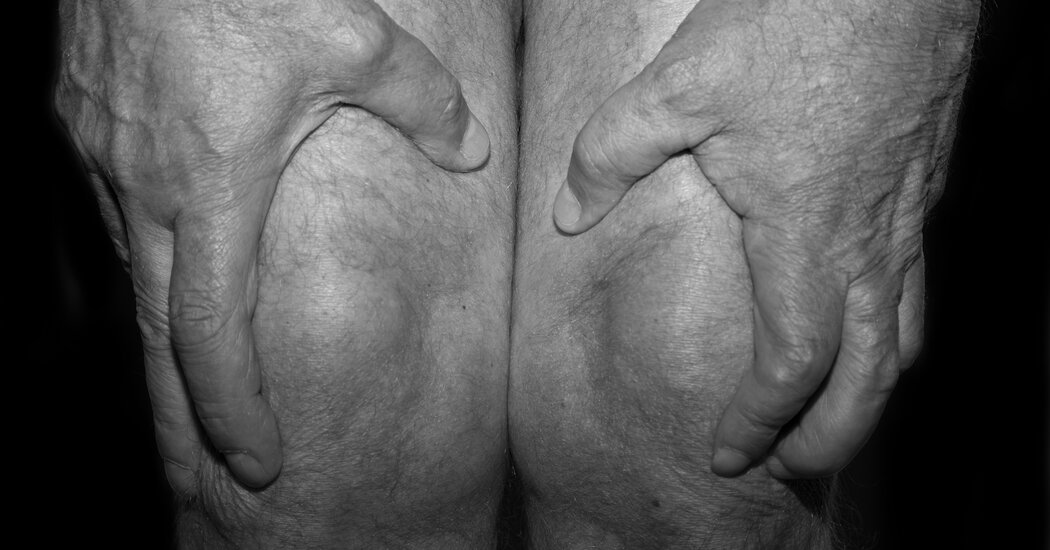Nearly 33 million Americans have osteoarthritis. Experts explain how it affects the body, and why it’s so hard to diagnose.
It may start as a twinge in your knee or hip when you get out of bed. Over time, that twinge may turn into persistent pain, swelling or reduced range of motion — signs of a condition called osteoarthritis.
But as with many other chronic conditions, doctors are unable to diagnose osteoarthritis until it has already progressed significantly and has interfered with everyday activities. Scientists are racing to find ways to diagnose osteoarthritis earlier and stave off or slow some of the damage from the disease, which affects over 32.5 million adults in the United States and more than 500 million people worldwide.
Research has started to show that osteoarthritis is not caused solely by everyday wear and tear on joints, like the deterioration of rubber treads on a tire over time. In some patients, persistent, low-grade inflammation might accelerate the progression of the disease or even cause it. And scientists now believe the damage can start long before symptoms appear. In a new study published last week, researchers from Duke University identified molecules circulating in the blood of women that might serve as markers of the disease up to eight years before an X-ray picked up changes in their bones.
“This tells us that there is an osteoarthritis continuum,” said Dr. Virginia Byers Kraus, lead author of the study and a professor of medicine at Duke. “You’re already on an escalator that’s leading you up the path to symptoms and X-ray changes way before we thought.”
What happens in the body in osteoarthritis?
The disease affects cartilage, a protective tissue that serves as padding between the bones in your joints, allowing them to glide over each other when you walk, climb stairs or bend to pick up groceries. It is constantly breaking down with exercise and everyday activities. “But our body typically knows how to repair itself,” said Dr. Elaine Husni, director of the Cleveland Clinic’s Arthritis and Musculoskeletal Center. The fluid surrounding joints contains enzymes that help cut up and remove worn cartilage, while special cells fix minor damage and rebuild cartilage.
But this cycle of breakdown and repair goes awry in people with osteoarthritis, Dr. Husni said. In some patients, those enzymes may be too aggressive in removing cartilage, or the healing process may be much slower than the cartilage breakdown. In others, the body senses damage or stress in the joints, which leads to inflammation. This inflammation tells cartilage-snipping enzymes that they need to come remove worn-down tissue. But if the body can’t dial the inflammation back down after repairs are completed, it can lead to more cartilage breakdown, Dr. Husni said.
Carrying extra body weight is one of the biggest risk factors for developing osteoarthritis. Injuries from sports or repetitive motion also increase the risk of osteoarthritis, as do conditions that involve increased inflammation throughout the body, such as diabetes.
Eventually, the cartilage loses its ability to cushion the bones. This leads to pain, a crackling sensation when moving your joints, reduced range of motion and swelling. The symptoms of osteoarthritis are most common in weight-bearing joints like the knee, hip and lower spine, though they may also occur in the small joints in fingers or feet, Dr. Husni said.
How is osteoarthritis diagnosed?
When a patient shows up with joint pain, a provider might start by feeling for swelling, testing a joint’s range of motion and ordering tests to rule out other problems or types of arthritis.
The current gold standard for diagnosing osteoarthritis is an X-ray, which can show changes in joint structure associated with the disease. The more worn the joint, the narrower the gap appears between bones.
However, by the time these changes show up on an X-ray, the damage to the joint is already done, Dr. Husni said. X-ray images also don’t always correspond to the severity of symptoms or pain that patients experience. “You could have two patients with the same amount of joint space narrowing — something like two or three millimeters on an X-ray — but one patient could have a ton of pain and the other may not,” Dr. Husni said.
While Dr. Kraus’s team and other researchers are studying biomarkers that might make osteoarthritis easier to diagnose, it may take years to prove a blood test is reliable enough to use in clinical settings. Researchers are also looking at whether these and other molecular markers can be used alongside drugs in trials, to measure whether experimental treatments for osteoarthritis are working or not, she said.
For now, patients have to rely on supportive treatments to manage pain, such as heating pads, physical therapy and over-the-counter medicines, Dr. Kraus said.
And people can use the knowledge that osteoarthritis is a slowly progressing disease to take steps to reduce the risk of disease or slow the inevitable wear and tear of joints, Dr. Kraus said: Keep off excess weight, stay active and follow a balanced diet rich in anti-inflammatory foods can help support your joint health and overall well-being.
